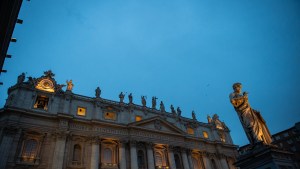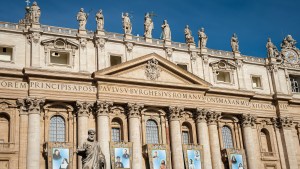The Rubik’s Cube offers a stimulating challenge to its users. For almost 50 years now, people across the globe have enjoyed struggling to match colored squares across the six surfaces of a cube. The complexity accounts for its enduring popularity. Sometimes aligning one or even two sides might not bring the user any closer to solving the three-dimensional puzzle.
Today the global investment community is faced with a kind of Rubik’s Cube of its own. The challenge is one of finding investments that harmonize profitability with the pursuit of goals that, while perhaps not contradictory, are often in tension with financial performance. These environment, social and governance objectives (ESG) test a manager’s ability to match the new colors with the more traditional goals of placing revenue, cost and profit in the right order.
There are a variety of frameworks for measuring a company’s fidelity to ESG principles. Each has different emphases reflecting various concerns. For example, two of the leading standard-setting organizations, the Sustainability Accounting Standards Board and the Global Reporting Initiative, examine much of the same criteria, but from different perspectives. The first aims to provide assessments relevant to an investor, while the second has a broader universe of stakeholder interests in mind.
The Vatican, the USCCB and ESG
In recent months, both the Vatican and the United States Conference of Catholic Bishops (USCCB) have articulated principles of investing that aim to couple financial returns with the achievement of non-pecuniary objectives. With the release of its Investment Policy Statement (IPS) in July, the Vatican has committed itself to use environmental, social and governance criteria to steer its future investment decisions.
The Vatican’s announcement was preceded a few months earlier by the publication of the USCCB’s revised Socially Responsible Investment Guidelines (SRIG) in late last year. Both the USCCB’s SRIG and the Vatican’s IPS represent recent magisterial expressions of a Catholic socially conscious approach toward investing. A comparison of the two, however, reveals that while they share in the common inspiration of Pope Francis, differences in adaptation exist.
ESG and Vatican priorities
Unlike the Vatican document, the SRIG does not use the acronym ESG or the term it represents. Instead, the USCCB’s guidelines revolve around five broad categories chosen to direct its pursuit of investment opportunities: (1) Protecting Human Life, (2) Protecting Human Dignity, (3) Enhancing the Common Good, (4) Pursuing Economic Justice, and (5) Saving Our Global Home. To the extent that commonly identified ESG factors are relevant, they are folded within these categories.
The Vatican IPS centers on the more widely familiar classifications. It explicitly mandates that its investments seek alignment with ESG goals and broadly describes its understanding of each of the three principles. From the description found in the IPS, some insight can be gained into the Vatican’s interpretation of how these objectives are concretized in investing activities. While the environmental factor unsurprisingly emphasizes clean and renewable energy, application of the social principle focuses on improving wage and gender pay gaps and eliminating financial exclusion.
The governance principle highlights stakeholder theory and stresses the importance of adopting and implementing organizational practices that deter illegal and unethical practices, something with which the Vatican itself has struggled in managing its financial assets. The treatment of the governance principle also highlights the Vatican’s interest in investment opportunities where a balance of power between managers and shareholders is respected. Surprisingly absent from the discussion is any mention of worker participation in the power-sharing relationship.
The SRIG is more specific in identifying its investment aims, a feature that reflects its relative maturity. Within the five categories, the SRIG identifies particular lines of business to avoid and others that it will consider with an eye toward purposeful engagement through dialogue, proxy voting and support of shareholder resolutions. For example, while investments in enterprises that manufacture materials produced or marketed for abortion are prohibited, the statement directs the USCCB and its advisors to engage with other pharmaceutical companies to develop drugs and vaccines that do not rely on cell lines procured from abortions. The document also encourages support for corporate resolutions that seek board inclusion of women, people of color and individuals with disabilities. Some types of investment are preferred. For example, the SRIG favors investments in companies owned by people of color and women as well as businesses demonstrating a commitment to diversity and racial justice.
Trading and public markets
Some of the newer investment opportunities available in public markets are prohibited by the SRIG. Among them are businesses devoted to gambling (which would include the expanding online variety) and the recreational use of cannabis. Several companies devoted to both activities began trading on leading exchanges such as the NYSE and Nasdaq within the last few years. The document’s treatment of cannabis appears to offer a clear signal of the USCCB’s disapproval of the recreational use of marijuana, despite several states passing laws legalizing the practice.
While the IPS is comparatively less detailed, one of its significant features not found in the SRIG is the disapproval of certain trading techniques. The IPS directs the Vatican to avoid investment vehicles engaged in short-selling and high frequency trading. Presumably, the prohibition reflects a moral position on these two controversial practices.
Similar to the various secular ESG frameworks, the IPS and the SRIG contain both overlap and areas of different emphases. The Vatican’s adoption of popular terminology may be better suited for engagement with the investing public more generally. The specificity of the SRI provides greater direction. Further development of both documents will contribute to the difficult task of building a financially successful and socially responsible Catholic approach toward investing. Like solving the Rubik’s Cube, success in investing responsibly requires the harmonizing of many colors.




